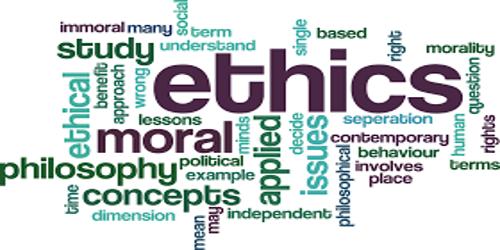Five steps in an Ethical Analysis
The recommended procedure for analyzing ethical cases is to apply a variant of the design/problem-solving loop. In the process, one attempts to reason systematically to a rationally defensible moral judgment using ethical principles and moral rules. The basic steps in the procedure are as follows:
- Identify the Issues,
- Outline the Options,
- Construct Ethical Arguments,
- Evaluate the Arguments,
- Make a Decision.
Step 1: Identify the Issues –
(a) What are the major moral or ethical issues raised by this case?
(b) What are the major factual issues raised by this case?
(c) What are the major conceptual issues raised by this case?
(d) Who are the major stakeholders in this case? (Stakeholders refer to all individuals whose interest could be affected by the decision made in the case).
(e) How the issues are in this case related to the application of technology?
Step 2: Outline the Options
(a) What are the main alternative actions or policies that might be followed in responding to the ethical issues in this case?
(b) What are the major views on the conceptual issues raised by this case?
(c) What facts are unknown or controverter that might be relevant to deciding this case (may require research to determine some facts)?
Step 3: Construct Ethical Arguments –
(a) Determine which of the four moral standards discussed by Harris (egoism, natural law, utilitarianism, and respect for persons) apply to this case?
(b) Identify the moral principles or high-level rules that can be invoked to support a conclusion as to what ought to be done ethically in this case or similar cases?
(c) Determine whether the different moral standards yield converging or -diverging judgments about what ought to be done?
Step 4: Evaluate the Arguments for each Option –
(a) Weigh the ethical reasons and arguments for each option in terms of their relative importance, assigning weights to each consideration where:
- very important consideration,
- somewhat important consideration,
- a consideration of the only minor importance
(b) Determine whether there are any unwarranted factual assumptions that need to be examined in each argument.
(c) Determine whether there are any unresolved conceptual issues in each argument.
Step 5: Make a Decision –
(a) Decide which of the identified options you would recommend or judge to be the ethically best way to deal with the issue presented in this case based on which option has the strongest ethical reasons behind it.
(b) Determine how a critic of your position might try to argue against it using other ethical reasons, and present a rebuttal or counter-argument in defense of your judgment.














